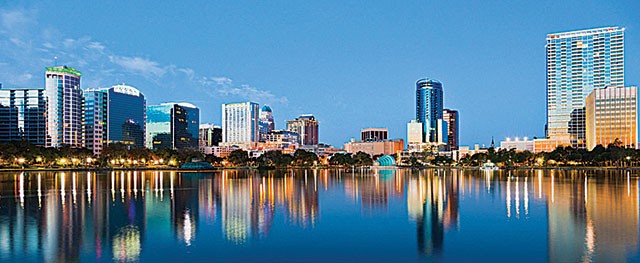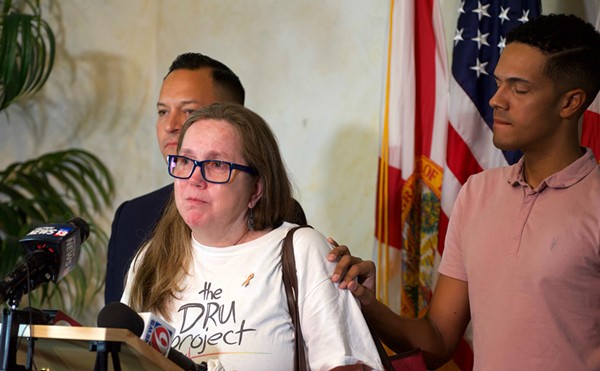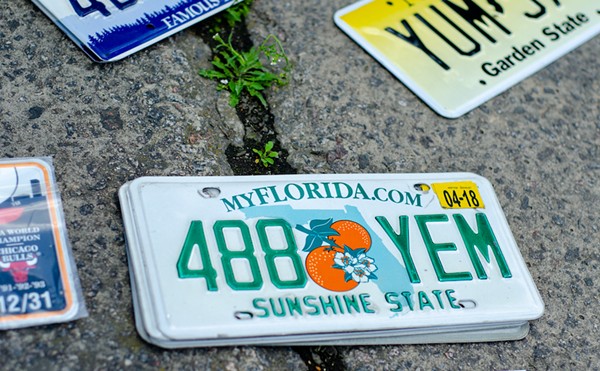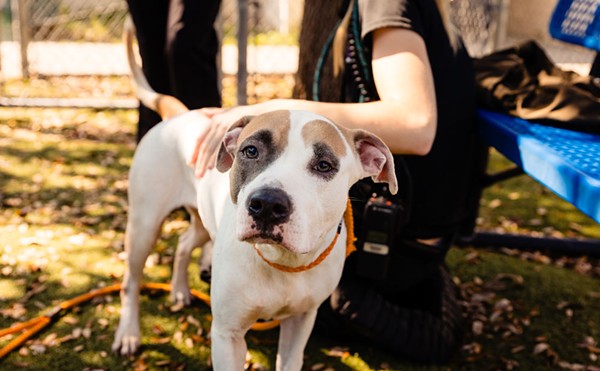1. Orlando’s naming story is bullshit: The story goes that Orlando derives its name from a soldier named Orlando Reeves, a man who heroically gave his life in 1835 in a battle with Indians on the banks of Lake Eola. Afterward, his comrades buried him under a pine tree and carved his name in it. Over the next century, Reeves’ legend grew with the retelling. Two problems: There was no soldier named Orlando Reeves or a battle on Lake Eola. A more likely story is that the owner of a sugar plantation some 30 miles away, Orlando Rees, carved his name in a pine tree while traveling through downtown. A few years later, in 1835, he abandoned Florida after Indians burned down his house. In time this all converged into the Orlando Reeves myth.
2. Orlando’s first permanent settler was probably a murderer: His name was Andrew Jernigan, and he arrived with his family, slaves and cattle in what is now Orlando in 1842, after most of the Indians had been driven out following the Second Seminole War. He later became a state representative. But in 1859, he became a murder suspect following a deadly brawl. He escaped from jail twice and fled to Texas, returning 25 years later “in ill health and forgotten.”
3. Orlando used to be in Mosquito County: In 1824, soon after Florida became a U.S. territory, most of Central Florida belonged to the aptly named Mosquito County, whose seat was the long-forgotten port town of Enterprise. In 1845, when Florida became a state, Mosquito was broken up into several counties, including Orange. Half a century later, promoters sold land here with the promise of “No Insects.”
4. Orlando cheated to become the Orange County seat: In 1856, there was an election to choose Orange County’s seat. Apopka was the favorite, due to its proximity to navigable waters. Judge James Speer, an early resident of Orlando, had other plans. Because militia members could vote wherever they were on Election Day, he held a free picnic for a slew of militiamen from Sumter County and asked them to vote for nearby Fort Gatlin. Because an Alabama businessman – who happened to own much of what is now downtown – offered to donate land for a courthouse, the seat was moved from Fort Gatlin to Orlando.
5. How Boggy Creek got its name: In 1870 – a time when Orange County was beset by general lawlessness, not unlike the Wild West – Sheriff David Mizell was ambushed and murdered. A posse hunted down the suspect, Mose Barber, and his sons. The Barbers fled; according to local lore, his horse became bogged down while crossing a creek – hence the name Boggy Creek. Mose Barber escaped, but his sons were killed. The Barber-Mizell feud continued into the 20th century, until Barber’s great-great grandson married a Mizell.
6. Orlando was “The Phenomenal City” before “The City Beautiful”: Orlando’s original motto was “The Phenomenal City.” Around 1900, the city held a contest to change it, and “The City Beautiful” beat out “The Magic City,” “The Queen City” and “The Picturesque City.” In the 1960s, during the space race, Orlando tried to again change its motto to the “Action Center of Florida,” but that never caught on.
7. How Lake Eola got its swans: The Brits have been coming to Orlando en masse since this city was in its infancy. In 1895, one of them, Charles Lord, had four swans shipped to Orlando – the city covered the $95 fee – because he fondly recalled the way the swans looked on the Thames River back home. Those swans’ descendants are still swimming in Lake Eola.
8. Orlando’s first Miss America winner didn’t actually win: Actually, Margaret Ekdahl won on a technicality. She won the Miss Florida pageant in 1928, but that year, facing financial problems, the Miss America pageant called off its Atlantic City contest. Instead, the state winners went to Miami Beach for the Miami National Beauty Contest, which everyone referred to as Miss America anyway. Ekdahl came in third. However, a family friend and local businessman alleged that the winner was not actually from California, but rather Oklahoma, and the runner-up, Miss Texas, was married – an automatic disqualification. Miss Texas refused to return her crown or prize money, but Ekdahl was officially declared the winner. She died in 1932 of peritonitis at the age of 20.
9. Dr. Phillips wasn’t a doctor: There’s no denying Dr. Phillip Phillips, the man whose name adorns our soon-to-be-finished performing arts center, was many things – citrus innovator, philanthropist, benefactor to African-Americans in the age of segregation – but there’s no record that he was ever a doctor, even though that’s what he insisted on being called throughout his life. He might have been a veterinarian, but that’s unclear, too.
10. Orlando was the country’s testing ground for DDT in 1945: Toward the end of World War II, the U.S. government wanted to see if DDT could be used against agricultural pests. Over 10 days researchers sprayed more than 14,000 cows. Not only did DDT kill the hated horn fly, but also roaches by the bushel. Orlando officials, figuring DDT might also work against mosquitoes and other bugs, asked the government for a supply of the pesticide to spray in restaurants. Soon, trucks were driving along Orlando streets spraying the toxic chemical far and wide. DDT did help control mosquitoes, however, which made it easier to attract tourists.
11. How Orlando International Airport got its designation, MCO: What is now Orlando International Airport began as a training airstrip for British pilots during World War II. After the war, the army turned over the property to the city. Its designation, MCO, is in honor of Col. Mike McCoy, a pilot whose plane imploded and crashed while flying over Orlando.
12. The University of Central Florida’s first mascot was the Citronaut: The Citronaut was a cross between an orange and an astronaut, designed to reflect the region’s citrus past and Space Age future. It was mercifully short-lived.
13. Theme parks that weren’t (or didn’t make it): With the success of Disney (and later Universal) came many imitators. Most of them failed. Theme parks that never launched or crashed soon after include: Circus World, Boardwalk and Baseball, Six Flags Stars Hall of Fame Wax Museum, Little England, Splendid China, Roy Rogers’ unnamed western dude ranch; Veda Land (which combined magic and transcendental meditation), Winter Wonderlando, Hurricane World and Bible World.



















